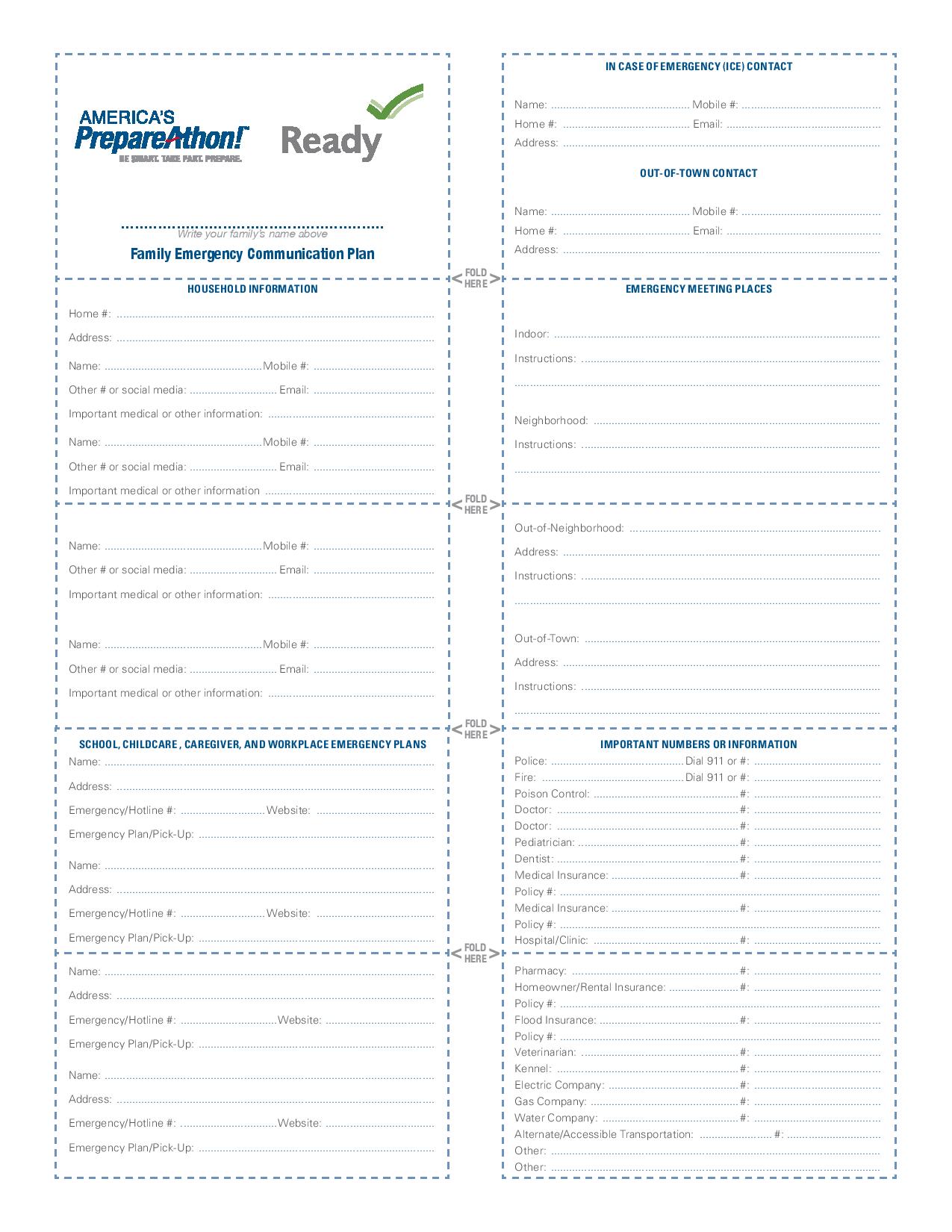South San Francisco, CA August 23, 2016 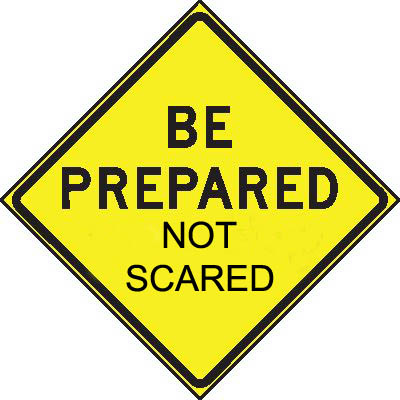
BE PREPARED – DON’T BE SCARED!!
Living in earthquake country, along with other potentials disasters, makes South City residents more aware of what they need to do to be proactive and to plan ahead. Our City is very fortunate to have one of the best Community Emergency Response Teams made up of South City folks and supported by our SSF Fire Department, under the direction of Ken Anderson. ESC strongly encourages all neighbors to take the FREE 9 week course to learn what to do in the event of an emergency and what to do beforehand to be prepared, as outlined on the City website:
CERT Basic Training
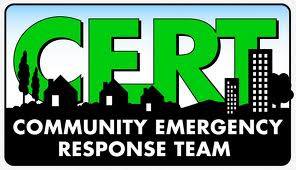
The South San Francisco Fire Department offers a CERT Basic Training program which covers how to be better prepared, respond and recover from a disaster.
CERT Basic Training program graduates who meet city requirements can volunteer to join CERT as members. CERT members meet monthly to train and practice together.
When emergencies happen, CERT members apply the knowledge and skills learned to aid those in their immediate area until help arrives. When help does arrive, CERTs provide useful information and assistance to responders as directed at the disaster site.
CERTs help with non-emergency projects in our community. Recent projects include distribution of safety and disaster education materials and support during community events such as fairs, fun runs, and other local events.
In addition to the regular CERTs, there is also a CERT amateur radio (HAM radio) group who practice and train to support our city’s first responders during emergencies.
How to Join:
If you are interested in attending the CERT Basic Training program or joining the SSF CERT Volunteers please contact the CERT information hotline at (650) 829-4336
###
In addition San Mateo County offers another valuable tool via the SMC Alert system:
ARE YOU PREPARED?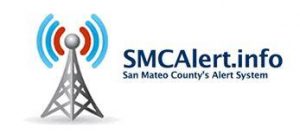
Earthquakes, Fires, Floods and Emergencies are unpredictable.
Did you know the Sheriff’s Office of Emergency Services (OES) has a FREE alert system called SMCAlert
SMCAlert serves all of the County of San Mateo and can be used to immediately contact you during urgent or emergency situations such as:
* Important emergency information
* Evacuations
* Sheltering in place
* Police emergencies
* Road closure due to major accident
You can select how to receive alerts on your:
* Cell phone
* Home phone
* Email
Sign up here: WWW.SMCAlert.info
EMERGENCY KITS
Our safety experts from (OES) have put together checklists to help you get started. Click here bit.ly/2bNRmQb
###
And from our own past write ups we re-share this information on becoming prepared:
How To Prepare For Emergencies
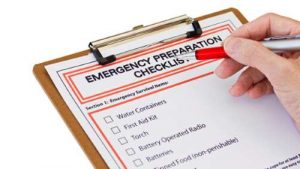
Start your kit today- don’t get overwhelmed – just start with a few basic items: medications, keys, cash, duct tape, heavy duty plastic bags, indelible ink pen, etc – toss into an old backpack & get started today!
There is no substitute for the actual training yet there are certain things neighbors can do to plan and prepare for emergencies. The gas explosion in San Bruno really brought it home; disasters can, and do, strike at any time. Here are a few suggestions to get you started:
Have a plan; where to meet up with family, an out of area phone contact to allow check in, gas in the tank, cash on hand, ‘bug out bag’ backpack with basic supplies ready to go at a moment’s notice.
What to keep in a ‘bug out bag’; comfortable shoes, gloves, jacket, medications, contact numbers, keys, cash, whistle, hand cranked radio/light/siren, indelible ink pen, paper, duct tape, batteries, flashlights, heavy duty plastic bags, water, high protein foods.
Home supplies; in addition to bug out bag, enough food to last you and your family 7 days, cooking options/camping stove, can opener, clothing, blankets, and other items you find necessary. Consider buying a plastic garbage can with rollers to keep some items safely secured outside your home in the event your home becomes uninhabitable.
Remember we live in earthquake country and we must be prepared. Ranking as a higher concern with the USGS is the potential ArKStorm scenario of major flooding as it occurs in California every 100 years. Folks are encouraged to think of a few ‘escape’ plans in the event of any emergency and practice it regularly with your household.
###
Your family may not be together if a disaster strikes, so it is important to think about the following situations and plan just in case. Consider the following questions when making a plan:
How will my family/household get emergency alerts and warnings?
How will my family/household get to safe locations for relevant emergencies?
How will my family/household get in touch if cell phone, internet, or landline doesn’t work?
How will I let loved ones know I am safe?
How will family/household get to a meeting place after the emergency?
SEE ATTACHMENT BELOW FOR WALLET SIZE INFORMATIONAL LIST
HOUSEHOLD INFORMATION
Write down phone numbers and email addresses for everyone in your household. Having this important information written down will help you reconnect with others in case you don’t have your mobile device or computer with you or if the battery runs down. If you have a household member(s) who is Deaf or hard of hearing, or who has a speech disability and uses traditional or video relay service (VRS), include information on how to connect through relay services on a landline phone, mobile device, or computer.
SCHOOL, CHILDCARE, CAREGIVER, AND WORKPLACE EMERGENCY PLANS
Because a disaster can strike during school or work hours, you need to know their emergency response plans and how to stay informed. Discuss these plans with children, and let them know who could pick them up in an emergency. Make sure your household members with phones are signed up for alerts and warnings from their school, workplace, and/or local government. To nd out more about how to sign up, see Be Smart. Know Your Alerts and Warnings at http://1.usa.gov/1BDloze. For children without mobile phones, make sure they know to follow instructions from a responsible adult, such as a teacher or principal.
OUT-OF-TOWN CONTACT
It is also important to identify someone outside of your community or State who can act as a central point of contact to help your household reconnect. In a disaster, it may be easier to make a long-distance phone call than to call across town because local phone lines can be jammed.
EMERGENCY MEETING PLACES
Decide on safe, familiar places where your family can go for protection or to reunite. Make sure these locations are accessible for household members with disabilities or access and functional needs. If you have pets or service animals, think about animal-friendly locations. Identify the following places:
Indoor: If you live in an area where tornadoes, hurricanes, or other high-wind storms can happen, make sure everyone knows where to go for protection. This could be a small, interior, windowless room, such as a closet or bathroom, on the lowest level of a sturdy building, or a tornado safe room or storm shelter.
In your neighborhood: This is a place in your neighborhood where your household members will meet if there is a re or other emergency and you need to leave your home. The meeting place could be a big tree, a mailbox at the end of the driveway, or a neighbor’s house.
Outside of your neighborhood: This is a place where your family will meet if a disaster happens when you’re not at home and you can’t get back to your home. This could be a library, community center, house of worship, or family friend’s home.
2
COLLECT INFORMATION
America’s PrepareAthon! ready.gov/prepare
Outside of your town or city: Having an out-of-town meeting place can help you reunite if a disaster happens and:
- You cannot get home or to your out-of-neighborhood meeting place; or
- Your family is not together and your community is instructed to evacuate
the area.
This meeting place could be the home of a relative or family friend. Make sure everyone knows the address of the meeting place and discuss ways you would get there.
OTHER IMPORTANT NUMBERS AND INFORMATION
You should also write down phone numbers for emergency services, utilities, service providers, medical providers, veterinarians, insurance companies, and other services.
Make copies of your Family Emergency Communication Plan for each member of the household to carry in his or her wallet, backpack, or purse. Post a copy in a central place at home. Regularly check to make sure your household members are carrying their plan with them.
Enter household and emergency contact information into all household members’ mobile phones or devices.
Store at least one emergency contact under the name “In Case of Emergency” or “ICE” for all mobile phones and devices. This will help someone identify your emergency contact if needed. Inform your emergency contact of any medical issues or other requirements you may have.
Create a group list on all mobile phones and devices of the people you would need to communicate with if there was an emergency or disaster.
Make sure all household members and your out-of-town contact know how to text if they have a mobile phone or device, or know alternative ways to communicate if they are unable to text.
Read Be Smart. Know Your Alerts and Warnings at http://1.usa.gov/1BDloze and sign up to receive emergency information.
Once you have completed your Family Emergency Communication Plan, made copies for all the members of your household, and discussed it, it’s time to practice!
Here are some ideas for practicing your plan:
Practice texting and calling. Have each person practice sending a text message or calling your out-of-town contact and sending a group text to your mobile phone group list.
Discuss what information you should send by text. You will want to let others
know you are safe and where you are. Short messages like “I’m OK. At library”
are good.
SHARE MAKE SURE EVERYONE HAS THE INFORMATION NOW IT’S TIME TO PRACTICE!
Talk about who will be the lead person to send out information about the designated meeting place for the household.
Practice gathering all household members at your indoor and neighborhood emergency meeting places. Talk about how each person would get to the identi ed out-of-neighborhood and out-of-town meeting places. Discuss all modes of transportation, such as public transportation, rail, and para-transit for all family members, including people with disabilities and others with access and functional needs.
Regularly have conversations with household members and friends about the plan, such as whom and how to text or call, and where to go.
To show why it’s important to keep phone numbers written down, challenge your household members to recite important phone numbers from memory— now ask them to think about doing this in the event of an emergency.
Make sure everyone, including children, knows how and when to call 911 for help. You should only call 911 when there is a life-threatening emergency.
Review, update, and practice your Family Emergency Communication Plan at least once a year, or whenever any of your information changes.
To help start the conversation or remind your family why you are taking
steps to prepare and practice, you may want to watch the 4-minute video,
It Started Like Any Other Day, about families who have experienced disaster, at www.youtube.com/watch?v=w_omgt3MEBs. Click on the closed captioning (CC) icon on the lower right to turn on the captioning.
After you practice, talk about how it went. What worked well? What can be improved? What information, if any, needs to be updated? If you make updates, remember to print new copies of the plan for everyone.
OTHER IMPORTANT TIPS FOR COMMUNICATING IN DISASTERS
Text is best when using a mobile phone, but if you make a phone call, keep it brief and convey only vital information to emergency personnel and/or family or household members. This will minimize network congestion, free up space on the network for emergency communications, and conserve battery power. Wait 10 seconds before redialing a number. If you redial too quickly, the data from the handset to the cell sites do not have enough time to clear before you’ve re-sent the same data. This contributes to a clogged network.
Conserve your mobile phone battery by reducing the brightness of your screen, placing your phone in airplane mode, and closing apps you do not need. Limit watching videos and playing video games to help reduce network congestion.
Keep charged batteries, a car phone charger, and a solar charger available for backup power for your mobile phone, teletypewriters (TTYs), ampli ed phones, and caption phones. If you charge your phone in your car, be sure the car is in a well-ventilated area (e.g., not in a closed garage) to avoid life-threatening carbon monoxide poisoning.
1 Federal Communications Commission, Public Safety and Homeland Security Bureau. (n.d.) Tips for communicating in an emergency. Retrieved from http://transition.fcc.gov/pshs/emergency-information/tips.html
If driving, do not text, read texts, or make a call without a hands-free device.
Maintain a household landline and analog phone (with battery backup if it has a cordless receiver) that can be used when mobile phone service is unavailable. Those who are Deaf or hard of hearing, or who have speech disabilities and use devices and services that depend on digital technology (e.g., VRS, Internet Protocol [IP] Relay, or captioning) should have an analog phone (e.g., TTY, ampli ed phone, or caption phone) with battery backup in case Internet or mobile service is down.
If you evacuate and have a call-forwarding feature on your home phone, forward your home phone number to your mobile phone number.
Use the Internet to communicate by email, Twitter, Facebook, and other social media networks. These communication channels allow you to share information quickly with a widespread audience or to find out if loved ones are OK. The Internet can also be used for telephone calls through Voice over Internet Protocol. For those who are Deaf or hard of hearing, or who have speech disabilities, you can make calls through your IP Relay provider.
If you do not have a mobile phone, keep a prepaid phone card to use if needed during or after a disaster.
Use a pay phone if available. It may have less congestion because these phones don’t rely on electricity or mobile networks. In some public places, you may be able to nd a TTY that can be used by those who are Deaf or hard of hearing, or who have speech disabilities.
MORE INFORMATION FROM THE FEDERAL GOVT CLICK HERE
